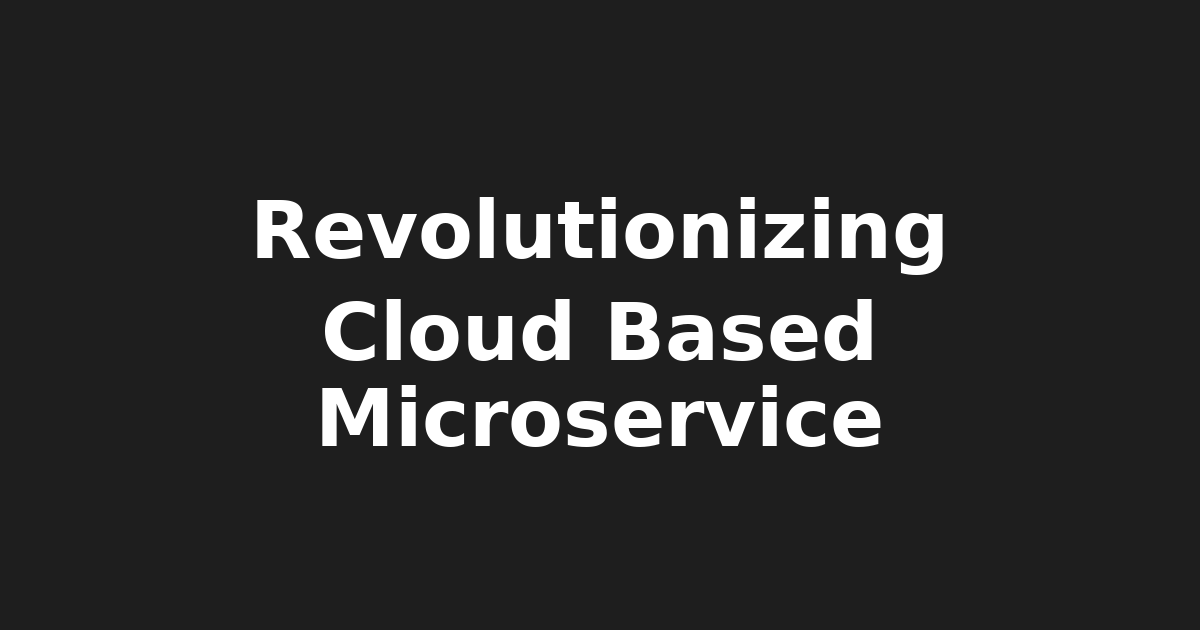Serverless Computing: Revolutionizing Microservices Architecture

Serverless Computing and its Impact on Microservices Architecture
===========================================================
Introduction
Serverless computing has gained significant traction in recent years, with major cloud providers like AWS, Azure, and Google Cloud offering serverless platforms. This trend is driven by the growing adoption of microservices-based applications, which require efficient and scalable infrastructure. In this article, we will explore the impact of serverless computing on microservices architecture and provide an overview of key technologies involved.
Why Serverless Computing is Trending
Increased Adoption
Serverless computing is becoming increasingly popular among developers, with major cloud providers investing heavily in their respective serverless platforms.
- According to a report by Gartner, the global serverless market is expected to grow from $1.4 billion in 2020 to $4.9 billion by 2025, at a Compound Annual Growth Rate (CAGR) of 42.6% during the forecast period.
- A survey by Redmonk found that 71% of developers believe serverless computing is more popular than traditional server management.
Microservices Architecture
The growth of microservices-based applications has created a demand for efficient and scalable infrastructure. Serverless computing provides an attractive solution for these use cases.
- According to a report by Forrester, microservices architecture is expected to become the dominant approach to application development in the next five years.
- A study by OWASP found that 71% of applications are built using microservices architecture.
Cost Savings
By paying only for what they use, developers can reduce costs associated with managing servers and infrastructure, making serverless computing an attractive option.
- According to a report by Gartner, serverless computing can reduce costs by up to 80% compared to traditional server management.
- A study by IBM found that serverless computing can reduce operational expenses by up to 50%.
Key Technologies Involved
Cloud Providers
Major cloud providers like AWS, Azure, and Google Cloud offer serverless platforms.
- AWS Lambda: a fully managed serverless compute service that allows developers to run code without provisioning or managing servers.
- Azure Functions: a serverless compute service that allows developers to write and deploy functions using C#, F#, JavaScript, or other languages.
- Google Cloud Functions: a serverless compute service that allows developers to write and deploy functions using Python, Java, Go, or other languages.
Serverless Platforms
Serverless platforms like AWS Lambda, Azure Functions, and Google Cloud Functions provide an attractive solution for building and deploying microservices-based applications.
- Serverless Framework: an open-source framework that simplifies the development and deployment of serverless applications.
- Cloud Development Kit (CDK): a set of libraries and frameworks that allow developers to define cloud infrastructure in code.
Microservices Architecture
Microservices architecture is a software design pattern that structures an application as a collection of small, independent services.
- Service-Oriented Architecture (SOA): a software design pattern that emphasizes the use of services to achieve loose coupling and greater flexibility.
- Event-Driven Architecture (EDA): a software design pattern that emphasizes the use of events to communicate between microservices.
DevOps Tools
DevOps tools like Jenkins, GitLab CI/CD, and Docker provide an attractive solution for automating the development and deployment of serverless applications.
- Jenkins: an open-source automation server that allows developers to automate the build, test, and deployment of serverless applications.
- GitLab CI/CD: a set of tools that allow developers to automate the build, test, and deployment of serverless applications.
- Docker: an open-source containerization platform that allows developers to package and deploy microservices-based applications.
Relevance to Developers, Linux Users, System Administrators, and IT Professionals
Serverless computing provides an attractive solution for building and deploying microservices-based applications. However, it requires a shift in mindset from traditional server management to managing and monitoring new compute resources.
- Developers: Serverless computing allows developers to focus on writing code without worrying about the underlying infrastructure.
- Linux Users: Familiarity with Linux is essential for understanding the underlying infrastructure of cloud providers.
- System Administrators: Serverless computing requires a shift in mindset, as administrators need to understand how to manage and monitor these new compute resources.
- IT Professionals: Understanding serverless computing and its implications on microservices architecture is crucial for designing and implementing efficient cloud-based infrastructure.
Resources
For more information on serverless computing, check out the following resources:
